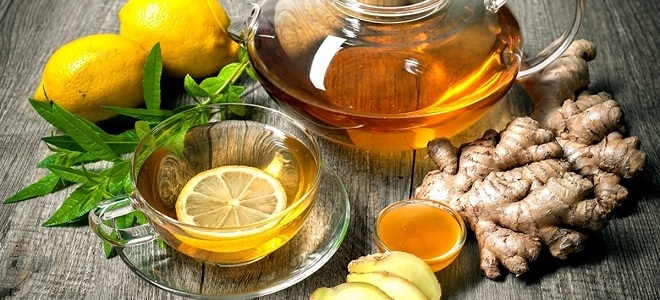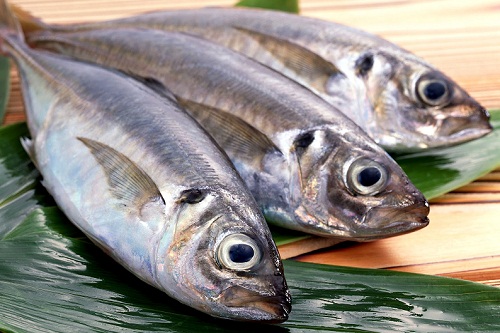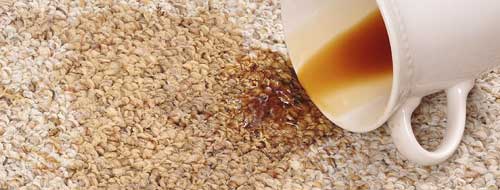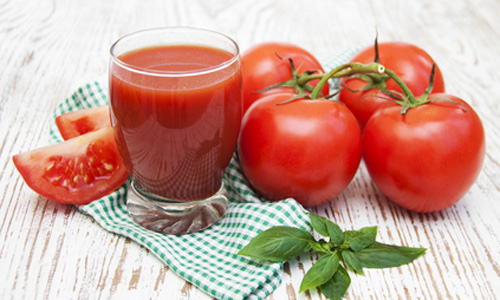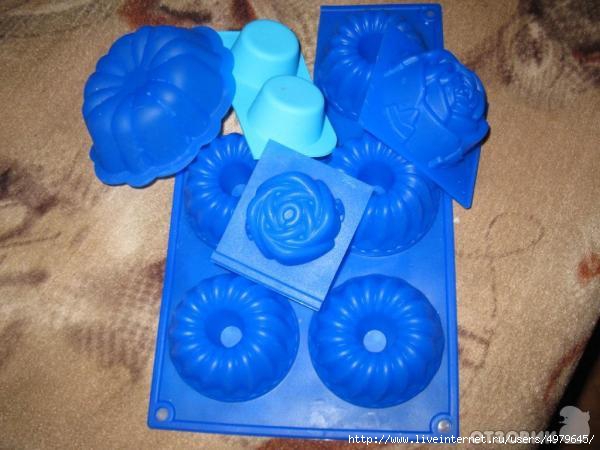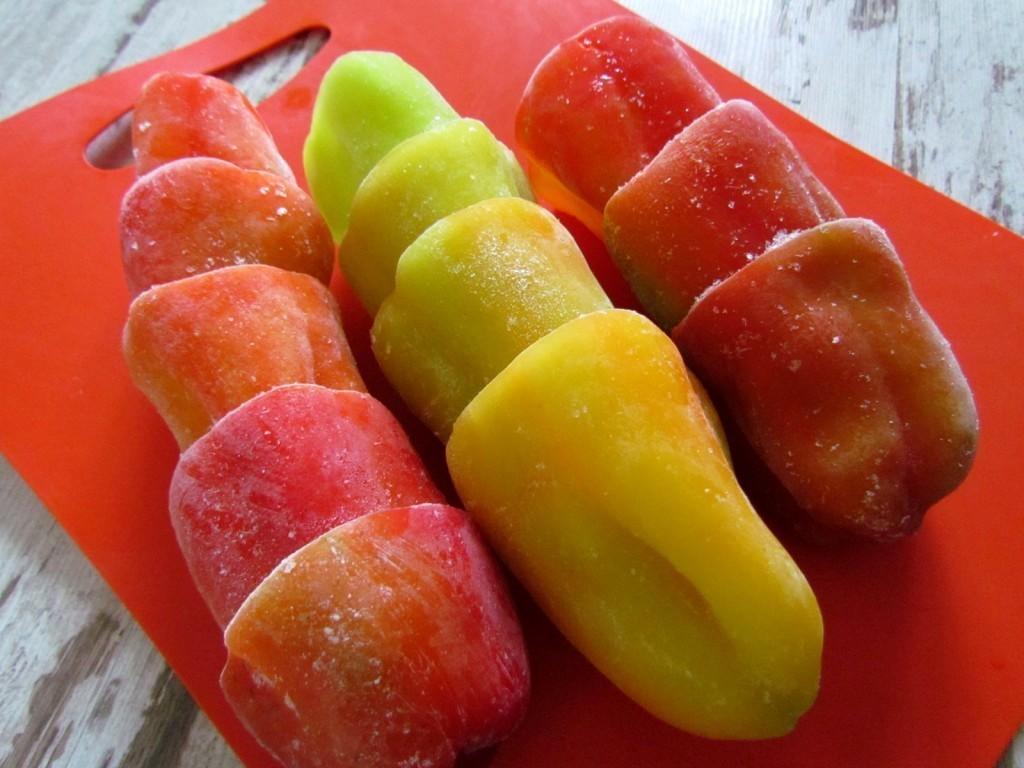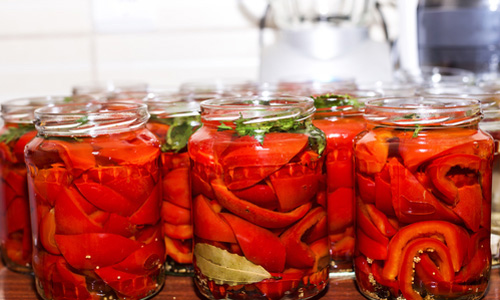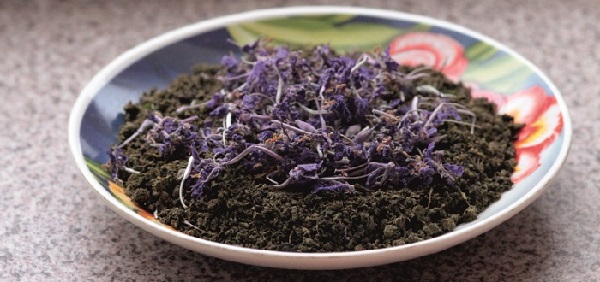How to drive moonshine - double distillation with intermediate cleaning. How to perform the second distillation of moonshine - step by step instructions
First-class moonshine cannot be achieved only by using high-quality raw materials and the correct execution of all stages of the primary distillation. Extraneous flavors and unpleasant odor will remain in the resulting drink due to the insignificant amount of yeast and harmful impurities in it.
Why is a second distillation of moonshine needed?
Double distillation with proper implementation will allow to achieve excellent taste of the drink and reduce hangover as a result of its use. With the help of purification, the fractional method and the steam tank, you will remove the aldehydes remaining after the first distillation and causing significant harm to the body.
Thus, the advantages of this method of making moonshine include:
- Significant improvement in taste.
- No unpleasant odor.
- Reducing health hazards.
- The possibility of making noble drinks based on the obtained moonshine.
- In some cases, an increase in degree.
There are situations in which repeated distillation is required. These include:
- Using mash based on berries and fruits.
- Purification with sodium hydroxide, soda and other chemical compounds.
- In order not to pour out, if for the first time it turned out badly.
Spending time on another cycle, you will get a great distillate, which will be nice to drink yourself and treat your neighbors.
The second distillation of moonshine: the right technology
Having decided on the need to improve quality, many distilleries are wondering:
The technology for brewing the drink of both the first and second cycles is based on different parameters of the boiling point of the chemicals included in the composition, and their separation into fractions for separation from each other.

An important factor in the question of how to distill moonshine a second time at home is to use only the central fraction from the primary distillation. The so-called body contains an order of magnitude less hard-to-remove impurities. Sometimes the third fraction is used - “tails”, but to obtain a quality product, it is necessary to use the “body”.
First step. Dilution
The first step towards secondary distillation is to dilute the moonshine with water.
Moonshine for secondary processing should be a fortress of 35 to 45 degrees. Use an alcohol meter to accurately determine the strength of the drink. The alcohol concentration required after dilution depends on the fraction used and on the desired strength as a result of:
- About 20 ° - if you took the "body".
- About 10 ° - if you use “tails”.
It is imperative that you do not exceed the indicated alcohol concentration for two equally important reasons:
- Ignition of alcohol vapors can result in detonation of equipment.
- Harmful impurities at high concentrations form a stable chemical bond and are difficult to remove.

The water used must be clean, preferably thawed or spring. Distilled or boiled is not recommended for use. Tap water must be passed through a charcoal filter and allowed to settle.
The temperature of the water may be room temperature, but it would be nice to cool it to 10 degrees by putting it in the refrigerator for a while.
Second phase. Cleaning
An equally important step in how to properly distill moonshine a second time is cleaning. The most environmentally friendly way is cleaning using charcoal, made independently. Coal for barbecue, bought in a supermarket, contains its harmful impurities, and in the future it will be necessary to get rid of them as well.
For production, it is better to use soft wood. They need to be cut into small briquettes or kruglyashi and remove the bark. It is undesirable to use a tree that has just been cut down; it is better to let the wood dry for a couple of weeks. After drying, the briquettes are tightly packed in a metal barrel with a sealed lid and a hole for the fitting. Fire is made, finished coal is periodically removed, and fresh briquettes are laid.
More often, at the stage of purification, activated carbon is used as a less labor-intensive method.

The option of cleaning with potassium permanganate is also possible. This is done as follows:
- Dissolve potassium permanganate in hot water in a proportion of 1 gram of manganese per 100 ml of liquid.
- Pour the solution into the moonshine and mix.
- Let stand for one hour until a precipitate appears.
- Add one tablespoon of soda and salt.
- After two hours, strain through a filter made of gauze or a thin cotton cloth.
It is important to remember that you should not rush. The quality of cleaning using this method depends on the slow transfusion of moonshine through the manufactured filter.
The third stage. Secondary distillation
There is nothing complicated or radically different from the first distillation in how to distill moonshine a second time. The resulting product is also divided into fractions:
- The head fraction, or pervach, is the first 10-12% of the liquid containing acetone and
- The main fraction or body is the next 80-90% liquid, consisting mostly of ethyl alcohol.
- The tail fraction is the last 5-10% of the fluid.
Pervach, despite the great love for him in Soviet times, is in no case drinkable. It has an unpleasant odor and is capable of causing great harm to the body, but it is not worth pouring it out. Such moonshine can be used to ignite coal or wipe board contacts. The fraction volume, according to general estimates, is 50 ml per liter of pure alcohol.
The double distillation of moonshine at home has as its goal the production of the main fraction. Its collection is until the strength of the output product drops to 45%. The strength of the total volume of the obtained moonshine is estimated at 60-70%.
The tail fraction, many home alcohol lovers add to the next portion of mash to increase its strength.
Is a steamer needed for secondary distillation?
The presence of a steamer or reflux condenser is optional, but desirable in the initial distillation. Many distilleries replace them with the distillation of moonshine. After all, he also purifies the product from fusel oils without additional waste of time.

But a full-scale purification in the process of primary distillation cannot be achieved by a sukhoparnik. For people who strive for excellence in everything, using it during the first and repeated distillation will achieve an almost perfect product.
The use of distillation columns
In how to properly distill moonshine a second time, additional purification with the help of a rectifier can help. It separates the liquids by the difference in evaporation. In the process of rectification from moonshine, albeit first-class, we obtain pure ethyl alcohol.

The use of mash leads to clogging of the rectifier. That is why it is desirable to use double distillation moonshine in a distillation column.
The output is an absolute neutral, pure product without impurities for the manufacture of tinctures or use in pure form.
How to overtake moonshine a second time? You will find tips below.
For secondary distillation, a very important factor is the quality of the water for the first stage.
Do not swap dilution and cleaning steps. Water partially destroys the structure of impurities, and purification with potassium permanganate or coal frees moonshine from the remnants of these compounds.
To determine the fractions during distillation, constantly monitor the “revolutions” using an alcohol meter.
The approach of the main fraction can be determined using the sense of smell. If the pungent unpleasant odor disappeared, then the "body" went.
Do not be greedy. Drain pervat - health is more expensive.
The strength of moonshine can be determined by burning. Paper moistened with moonshine will burn without a match only if the strength is over 40 degrees.
The addition of oak bark or wood chips after secondary distillation removes residues of harmful substances and makes moonshine similar to cognac.
Using these tips, you can understand how to properly distill moonshine a second time. And remember that the result is worth the effort. The second distillation of moonshine is an important step in obtaining a quality product.
Double distillation recipes
The absence of excess odors and shades of taste in twice-distilled moonshine leaves room for the distillery's creativity. The easiest way is to buy and use flavoring additives in the preparation of tinctures. You can also take advantage of the natural ingredients available at hand.
Most often, home-brewing lovers imitate noble French cognac. There are many recipes for such a “cognac”. Most often, pepper, tea and bay leaf are used in the composition, the infusion process is required either in an oak barrel or on oak wood chips.

A recipe for Christmas moonshine will never be superfluous. Of course, you need to do it in advance:
- Fill with chopped apples and fill with moonshine.
- Leave to insist for six months.
- Strain through a cloth or fine sieve.
- Add sugar to taste.
- Warm up to a boil three times, carefully monitoring fire safety.
- Put in a cool place for a week.
- Strain again.
- Dilute with a proportion of 10 liters of liquid a quarter of the water.
- Distill and filter.
- Christmas vodka is ready.
There are a lot of recipes based on moonshine, and everyone can choose the one that suits their taste.

CLEANING THE MOONSHOP FROM VEGETABLE OILS

Moonshine after the first distillation, in addition to ethyl alcohol, contains harmful impurities - light fractions (such as acetone) and fusel oils. In addition to harm to the body, they have a very unpleasant odor.
These impurities must be removed, which is the task of subsequent operations.
At this stage, the main purification of moonshine from fusel oils is carried out.




The above method - how to clean moonshine from fusel oils has been repeatedly tested and proved its advantages.
CLEANING THE MOONSHOP FROM VIRGIN OILS WITH ACTIVATED CARBON
In the photo - a bottle with mixed oil. One can see how muddy the liquid is.
Unfortunately, the photograph does not show that the result is an almost transparent liquid. Cleansed before the second distillation of moonshine.
After that, using the usual "driver" method, we begin to pump liquid into the lower bottle. Using the clamp, we adjust the fluid flow so that the funnel is always approximately half full. Flowing through charcoal, moonshine is purified from fusel oils, and from the remains of vegetable oil.
The end of the process is determined visually when the oil layer approaches the intake end of the hose.
Activated charcoal (crushed or granular) is pre-poured into the funnel so that it slightly exits the syringe body.
For clarity, the following is a sketch of the placement of treatment equipment before the second distillation. Using the rigid part of Hose 1, we take the fluid below the oil layer, with the help of the Clamp we regulate the fluid flow. The cleaning itself takes place in Funnel 2 with activated carbon. Activated carbon not only absorbs fusel oil from moonshine, it very well collects a suspension of oil that does not go up.
We collect equipment for removing vegetable oil and fusel oils. We use "hose 1", "clamp", "funnel 2" (see the moonshine equipment page).
After stirring, leave the bottle alone for 12 hours. During this time, the sediment of the solution occurs, and vegetable oil with trapped fusel oils rises. The photo shows a layer of oil at the top of the bottle.
Pay attention to a very important detail - we use only refined corn oilotherwise, the smell of oil in the final product is possible.
OIL MIXING
Quite a difficult moment - stirring vegetable oil in moonshine. These liquids have different specific gravities, and just do not mix. It is necessary to break the vegetable oil into drops, these drops will capture fusel oils and then float up. If you stir too intensely (for example with a construction mixer), then too small drops form, they do not float. If the stirring is too weak, then a few drops of oil are formed, and accordingly they trap few fusel oils.
In order to avoid errors, below is a video of this operation. It contains several episodes:
First - pour vegetable oil at the rate of 250 milliliters of oil per 10 liters of diluted moonshine.
Second- Be sure to cover the bottle with a plastic bag to prevent splashing.
Third - stir the oil for 60 seconds, then 60 seconds of rest. There are three such approaches - stirring / rest.
OIL CLEANING
Additionally, fusel oils will be removed during the second distillation by tail cutoff, but this is only an additional purification. The main purification of moonshine from fusel oils is carried out at this stage.
On the way out, we should get a product with a completely odorless sivuha. There will be odors of light fractions (such as acetone), but they will be removed during the second distillation and purification after the second distillation.
There are many ways to clean moonshine from fusel oils.
Tea
- soda
- milk
- egg white
A very interesting way is to freeze it.
Probably the best known way is cleaning moonshine with potassium permanganate.
First of all, the simplicity of the method attracts - a certain amount of potassium permanganate is dissolved in moonshine, then, after exposure, it is filtered through activated carbon or a cartridge for water purification.
Everything is very simple. But the bad thing is that potassium permanganate is an active oxidizing agent, and it interacts not only with fusel oils, but also with ethyl alcohol. As a result, potassium hydroxide, acetic aldehyde and other impurities are formed, which must be disposed of.
You can read in more detail on other sites, but you need serious rather than superficial information.
The next most popular method is charcoal moonshine cleaning.
There are a huge number of options for this method - you can grind the coal and pour it into the moonshine with subsequent exposure, you can filter it through a coal column or cartridge for cleaning water and much more. This can be read on other sites.
The difference between my method is that it is initially carried out cleaning moonshine with vegetable oil, and only then - activated carbon.
That is, double cleaning actually occurs.
The home-made funnel used in the method is actually a coal column. And activated carbon removes not only fusel oils, but also the remains of vegetable oil.
In my opinion, such a two-stage cleaning of moonshine with oil and activated carbon is optimal.
First step - cleaning moonshine with oil.
The use of vegetable oil for cleaning moonshine is based on the fact that oil that has got into moonshine captures fusel oils dissolved in it. Later, when upholding, the oil floats up, taking fusel oils with it.
Second phase - purification of moonshine with charcoal.
Moonshine purified by oil is additionally filtered through charcoal. In this case, charcoal removes fusel oils and residual vegetable oil.
That is, cleaning is double.
The advantage of this method is that it is not a chemical, but a physical process (as opposed to potassium permanganate). That is, a minimal amount of side compounds is formed, which have to be fought in the future.
And since we want to get a natural product, this is important.
Let's look at how to clean moonshine from fusel oils, in more detail.
Most - double with separation of harmful fractions. It involves the first distillation of the mash in, and then the second distillation with the allocation of heads, body and tails. It is necessary to maximize the purification of your product from harmful impurities (sivuhi) in order to get a quality drink.
We will consider in more detail second distillation, since moonshiners often have questions: whether it is needed at all, whether it is necessary to dilute moonshine with water, at what temperature everything happens and so on. As a moonshine we will use the usual steam distiller. Distillation on a distillation column looks a little different.

The lower the cost of your moonshine, the better you need to carry out the mash to moonshine.
# 1 Dilute raw alcohol to a strength of 15–20%
After the first distillation of mash, you get raw alcohol. Usually, at this stage, harmful fractions are not separated, but distilled at maximum power, so that less yeast and minimal amount of harmful substances released.
Before the second distillation you need dilute raw alcohol to a strength of 15–20%. This can be done in the following ways:
- Use the moonshine calculator. It will be necessary to measure the strength of the product before dilution, then substitute all values \u200b\u200band add the desired amount of water. This is the most accurate and correct approach to business.
- "Approximately". Since jewelry accuracy does not matter, you can simply estimate the desired amount of water and pour it into a cube. A small spread of the fortress is quite acceptable.
Why are we doing this? After dilution the connection of moonshine with fusel oils is weakening (an unpleasant odor appears), so it’s easier for us to separate the harmful fractions. From a security point of view, this is also correct.
Which water is better to use? Clean and drinkable. It is possible from the tap.

Moonshine still with a steamer significantly reduces the content of harmful substances in moonshine.
# 2 Purification of moonshine before the second distillation
This stage is optional, since good distillation cleans the product of siwuha quite well. But cleaning will definitely not be superfluous.
There are many approaches, and all of them have a right to exist. We will recommend the most simple and fast cleaning method using activated carbon.
- Pour diluted raw alcohol into one container.
- Add activated carbon at the rate of 1 tablespoon per 1 liter of moonshine (can be used in tablets or from a store).
- We insist from 10 hours to 10 days (optional).
- We make a dense filter of gauze or cotton pads, and then filter the liquid.
At the exit, the smell becomes nicer, and the taste is softer. I don’t practice it myself, since I consider it inappropriate to spend my time on such operations.

Consistency of professional coal for cleaning (BAU).
# 3 Separate harmful fractions during the second haul
After you have poured diluted crude alcohol into the distillation cube, you can proceed directly to distillation.
- Turn on the stove at full power.
- When the temperature reaches 60 degrees, the refrigerator should already be working.
- At 78 degrees, the first drops of moonshine will go. It is necessary to reduce the power to a speed of 1-2 drops per second and take it away. Focus on 50 ml of goals with each 1 kg of sugar in the Braga. This liquid should not be drunk.
- After selecting the heads, change the receiving tank and start collecting the body.
- The selection must be stopped at the moment when the strength in the stream drops to 40%. The thermometer will be approximately 95–96 degrees.
- Everything else can be collected in quality and overtaken next time.
Availability is optional, but he simplifies the whole process well.
Therefore, purchase equipment with it or embed it in the design of the device yourself.

Do not be greedy and take away all harmful fractions of your product.
# 4 Bred the product to a classic strength of 40%
We take any calculator of the moonshiner, substitute the values \u200b\u200band breed the product to a strength of 40%. If you prefer stronger drinks, then use your technology, although they usually focus on the number 40.
Wait at least a daywhile the moonshine is completely mixed and its taste is stabilized. Many say that after a few days the liquid becomes more pleasant and easier to drink. This really makes sense, but not many have the patience for such things. But in vain!
Useful videos from experienced movers
Sur-Likbez
Video Dmitry Lafetnikov appreciated for telling everything quickly, on business and "without water".
This video was also no exception, so we highly recommend that you watch it. Of all the practical videos on the second distillation, it is the most successful.
Moonshine Sanych
With feeling, plainly, arrangement. Konstantin Kapochkin also tries to make short videos, but he doesn’t get it as clearly as in the previous video.
Antonovich Podolyak
A big fan of speculating and going from afar. In the past, one of the most respected wine distillers in Russia. Antonovich.
A man shares his many years of experience and gives tips on the taste improvement of the finished product. I highly recommend all its videos for viewing, as the information is very useful and interesting.
Second Distillation Frequently Asked Questions
How to dilute moonshine to the second distillation and whether it should be done
In order to fire safety and improved fractionation it is recommended to dilute raw alcohol to a fortress 15–20% .
But each has its own point of view: Moonshiner Zhora, for example, considers dilution a waste of time. In his video on Youtube, he expresses his position, and his arguments look quite logical.

Do not forget that it is correct to pour alcohol into water, not water into alcohol.
How many times distill mash
In order to save time and reduce the quality of the product one distillation and separate all fractions immediately.
If you want to perform fractional distillation twice, then during the first stage, separate 50 ml of the voice of 1 kg of sugar, and during the second 30 ml with 1 kg of sugar (advice of Antonovich Podolyak).
In theory, it is possible to drive a product 3, 4 or more times, after which 96.6% strength can be obtained from medical alcohol. But most of the moonshine you lose, therefore, using this approach is impractical.
Moonshine yield during the second distillation
For 1 kg of sugar, 1 liter of moonshine of 40% strength is obtained. This is taking into account all losses, selection of harmful fractions, exact adherence to the technological process and double haulage haul.
In practice, a little more or a little less comes out: how will you be greedy, such a result and get.

Losses during the second distillation of moonshine
About 15% of the total volume of moonshine.
If during the first distillation you get about 5 liters of crude alcohol, then after the second distillation its amount will decrease to 4.25 liters.
The temperature during the second distillation
Up to 60 degrees mash is heated quite slowly. From 60 to 78, this happens very quickly. With 78 we begin to collect the heads of moonshine. Somewhere in 95–96 we finish the selection of the body.

Use the simplest electronic thermometer (about 200 rubles).
What is the strength of moonshine after the second distillation
It all starts with 70% of the fortress, and ends after falling to 40%. The general spirituality of the product will be at the level of 45-50%.
What water to dilute moonshine after the second distillation
Any potable water. From the tap, too, is possible.
In home distillation, all stages of making home-made alcohol are crucial. But it is precisely the distillation of moonshine that requires the maximum attention of the manufacturer, almost continuously monitoring. It is not easy to get a quality product in home realities and for this it is worth arming yourself with theoretical knowledge and at least simple control devices - a thermometer with a scale of up to 100 ° C and an alcohol meter. It’s also good to have a hydrometer in your arsenal - a sugar meter.
Preparatory phase before distillation
Before you send the mash to the distillation apparatus, you need to determine whether it really has completely fermented. To do this, the hydrometer is immersed in it: sugar readings should not be higher than 1.002, optimally - 0.99. If sugar is more than 1%, you need to send the mass for maturation, pouring yeast into it. Otherwise, the output will not be maximum. If everything is in order, we clarify the product (wait for the sediment to precipitate), drain and filter.
Now is the time to overflow the mash into a distillation cube. We fill no more than 2/3 of the available volume so that there is no excess pressure and the release of the mash into the tube through which alcohol vapors will be discharged.
The moonshine still to be used is preferably equipped with a contact thermometer. In this case, the moonshine distillation will be fully controlled. In addition, it is necessary to provide for the possibility of regulating the temperature of the refrigerator. Then the first stage will give the maximum yield and the least amount of harmful impurities.
Bit of theory
 It is time to find out how the mash is distilled correctly. During the heating of the mash, the evaporation of various substances that it contains, including alcohol, occurs. All of them have different boiling ts and, accordingly, are not connected to the evaporation process simultaneously. It is on this principle that distillation is based, and that is why the distillation temperature of moonshine should be controlled.
It is time to find out how the mash is distilled correctly. During the heating of the mash, the evaporation of various substances that it contains, including alcohol, occurs. All of them have different boiling ts and, accordingly, are not connected to the evaporation process simultaneously. It is on this principle that distillation is based, and that is why the distillation temperature of moonshine should be controlled.
Water evaporates at t + 100 ° C, alcohol at normal pressure at t + 78.4 ° C. Many harmful substances that are present in Braga have a boiling temperature t just above + 100 ° С. So, by overheating the cube, we can “enrich” the moonshine with sivuha and other impurities, and if water starts to evaporate, the strength of the product at the outlet will drop sharply. because pmoonshine distillation should be carried out under certain temperature conditions: from + 78.4 ° С to + 98.5 ° С.
Temperature control
We will figure out how to overtake moonshine so that the yield is maximum, and the amount of impurities is minimal. So, we divide the process into temperature phases:

- Now you can significantly reduce the fire, so that the temperature rises by 1 degree per minute. We bring the mash to t + 90 ° - + 93 ° C - at this very moment moonshine distillation should begin. That is, alcohol begins to evaporate in the cube, the gaseous substance passes through the tube into the refrigerator, where it condenses and begins to drip into the tank.
- Our moonshine will drip into the tank at a certain speed. It is necessary to adjust the heating temperature so that the output is approximately 120-150 drops in 1 minute.
- We carefully control our first stage, we monitor the temperature of the mash and moonshine at the exit. If the latter has at the outlet t more than + 30 ° C, it is necessary to strengthen the cooling of the refrigerator.
- Now we align all the indicators (t boiling mash, t moonshine at the exit), so that the speed of falling drops is maximum. We make sure that t in the cube gradually (very slowly) rises to + 98.5 ° C.
- If all the requirements for how to properly distill moonshine were met, then at the moment when the temperature in the cube reaches + 98.7 ° C, the process can be stopped - no more than 1% alcohol is left in the brew. The estimated residue in the distillation boiler should be about 2/3 of the original.
This is not a complete instruction for the first distillation, you still need to figure out which fractions can be used and which cannot.
Moonshine Fractions
At various heating temperatures, a different “bouquet” of substances evaporates from the mash. The very first, even before the alcohol begins to turn into a gaseous state, the vapors of such compounds as acetic aldehyde, antimony and ethyl acetate, a number of aldehydes and even deadly methyl alcohol will fall into the outlet pipe.
Similar processes will occur at the end of distillation of moonshine: substances with high boiling t will be warmed up and will begin to enter the tank with alcohol. To reduce the concentration of poisons, it is customary to divide production into three phases:

- The faction "body". As soon as you "cut off your head", it is advisable to change the handset, refrigerator, and at a minimum - the tank and sukhoparnik. During this phase of distillation, the strength of the alcohol produced must be constantly monitored. As soon as it falls just below 40 °, you can change the tank - we have already received all the valuable.
Important: control portions of moonshine must be taken separately from the general tank. Otherwise, the result is not the exact temperature of a small batch, but the average for the entire distillation
- Now the "tails" are selected. Here the fortress will be less, and the content of fusel oil and other impurities will be higher. Distillation of moonshine should be stopped as soon as the temperature reaches + 98.7 ° C.
The fractions "body" and "tails" are subject to purification and re-distillation. They are not mixed, because the "body" is a minimally contaminated product.
That's not all!
Now that you know how to do the first distillation correctly, you can get an extremely pure drink at home, not in the laboratory. True, the product that you currently have will go through several more stages of processing, and ideally, another distillation.

